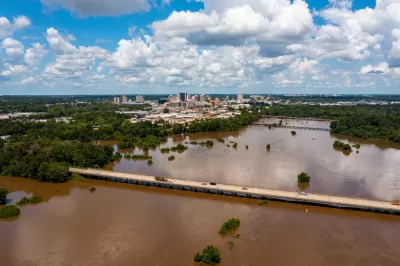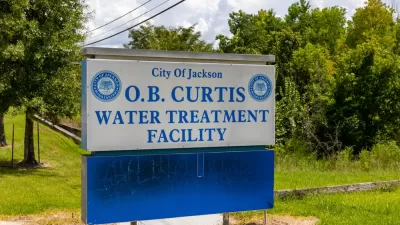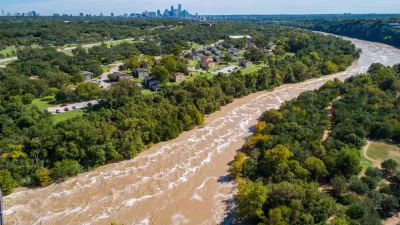Planning and funding are both in dire need in Jackson, Mississippi. The question is who should be in charge of all the planning and funding.

All eyes are still on Jackson, Mississippi, where an August emergency left an estimated 180,000 residents without drinking water.
Since then, local, state, and federal officials have been jockeying to place blame and position themselves favorably for the future. Annie Snider first reported, for example, that Rep. Bennie Thompson (D-Jackson) is seeking $200 million in funding for the city that would be allocated through the Environmental Protection Agency, thus bypassing the state of Mississippi entirely.
In the same article, Snider reports that state and local officials estimate the cost of repairing the city’s water system could be as much as $1 billion. “The city has not completed a long-term plan for addressing its problems. Thompson said $200 million is ‘what appears to be reasonable’ now, in the absence of a plan,” writes Snider.
Writing for the Mississippi Free Press in a separate article, Nick Judin details the back and forth between state and local officials as they push for funding to fix Jackson’s emergency for the long term. Jackson Mayor Chokwe A. Lumumba, for example, “has often complained of the Mississippi Legislature’s ‘paternalistic’ authority over infrastructure funds, both those derived from the federal government and from Jackson’s own citizens,” writes Judin.
Also according to Judin, Rep. Thompson is pushing for a planning process to identify the problems that caused the failure and “[extricate] itself from the depths of infrastructure collapse.”
FULL STORY: Rep. Bennie Thompson Seeks $200 Million Federal Aid For Jackson Water System

Manufactured Crisis: Losing the Nation’s Largest Source of Unsubsidized Affordable Housing
Manufactured housing communities have long been an affordable housing option for millions of people living in the U.S., but that affordability is disappearing rapidly. How did we get here?

Americans May Be Stuck — But Why?
Americans are moving a lot less than they once did, and that is a problem. While Yoni Applebaum, in his highly-publicized article Stuck, gets the reasons badly wrong, it's still important to ask: why are we moving so much less than before?

Using Old Oil and Gas Wells for Green Energy Storage
Penn State researchers have found that repurposing abandoned oil and gas wells for geothermal-assisted compressed-air energy storage can boost efficiency, reduce environmental risks, and support clean energy and job transitions.

Greening Oakland’s School Grounds
With help from community partners like the Trust for Public Land, Oakland Unified School District is turning barren, asphalt-covered schoolyards into vibrant, green spaces that support outdoor learning, play, and student well-being.

California Governor Suspends CEQA Reviews for Utilities in Fire Areas
Utility restoration efforts in areas affected by the January wildfires in Los Angeles will be exempt from environmental regulations to speed up the rebuilding of essential infrastructure.

Native American Communities Prepare to Lead on Environmental Stewardship
In the face of federal threats to public lands and conservation efforts, indigenous groups continue to model nature-centered conservation efforts.
Urban Design for Planners 1: Software Tools
This six-course series explores essential urban design concepts using open source software and equips planners with the tools they need to participate fully in the urban design process.
Planning for Universal Design
Learn the tools for implementing Universal Design in planning regulations.
Heyer Gruel & Associates PA
City of Moreno Valley
Institute for Housing and Urban Development Studies (IHS)
City of Grandview
Harvard GSD Executive Education
Salt Lake City
NYU Wagner Graduate School of Public Service
City of Cambridge, Maryland





























